Advanced Ancient Technology: Could Ancient Peruvians Soften Stone?
Ellen Lloyd - AncientPages.com - Archaeologists and other scientists have been scratching their heads trying to figure out how remarkable ancient Peruvian structures like Sacsayhuamán were constructed.
These marvelous structures consist of gigantic stones that are so heavy that our modern machinery can hardly move and put them in place.
Does the key to the puzzle lie in a certain very specific plant that gave the ancient Peruvians the possibility to soften stone or is the answer to the mystery access to advanced ancient technology that could melt stone?
According to researchers Jan Peter de Jong , Christopher Jordan Jesus Gamarra, the granite walls in Cuzco show evidence of being heated to a very high degree and vitrified- the outside surface becoming glassy and very smooth.
Based on this observation, Jong, Jordan and Gamarra draw the conclusion that "some sort of high tech device was used to melt stone blocks which were then placed and allowed to cool next to hard, jigsaw-polygonal blocks that were already in place.
The new stone would remain fixed against these stones in near-perfect precision-but would be its own separate block of granite that would then have more blocks fitted into place around it and "melted" into their interlocking positions in the wall.
In this theory, there would still be power saws and drills that would cut and shape the blocks as the walls were assembled," David Hatcher Childress wrote in his book Ancient Technology in Peru and Bolivia.
Researchers Jong and Jordan propose that several ancient civilizations worldwide were familiar with the high-tech melting of stone technology. They also say that "the stones on some of the ancient streets in Cuzco have been vitrified by some high temperature to give them their characteristic glassy texture.
Jordon, de Jong and Gamarra say that temperatures need to reach 1,100 degrees centigrade and that numerous archeological sites around Cuzco, including Sacsayhuaman and Qenko, showed signs of vitrification."
There are also indications the ancient Peruvians had access to a plant whose juices softened rock so that it could be worked into tightly fitted masonry.
In his book Exploration Fawcett Colonel Fawcett told of how he had heard that the stones were fitted together by means of a liquid that softened stone to the consistency of clay.
Colonel Fawcett told of how he had heard that the stones were fitted together by means of a liquid that softened stone to the consistency of clay. Brian Fawcett, who edited his father's book, tells the following story in the footnotes: A friend of his who worked at a mining camp at 14,000 feet at Cerro di Pasco in Central Peru, discovered a jar in an Incan or pre-Incan grave. He opened the jar, thinking it was chicha, an alcoholic drink, breaking the still intact ancient wax seal. Later, the jar was accidentally knocked over onto a rock.
This is the true story of the real Colonel Fawcett, whose life was the inspiration for the bestselling book The Lost City of Z and an upcoming movie starring Brad Pitt. A thrilling account, it tells of Colonel Fawcett and his mysterious disappearance in the Amazon jungle, which is now considered one of the greatest mysteries of the twentieth century.
The mystic and legendary British explorer Colonel Percy Harrison Fawcett disappeared in the unknown and unexplored territory of Brazil's Mato Grosso in 1925.
For ten years he had wandered the forests and death-filled rivers in search of a fabled lost city. Finally, convinced that he had discovered the location, he set out for the last time with two companions, one of whom was his eldest son, to destination ''Z,''never to be heard from again.
This thrilling and mysterious account of Fawcett's ten years of travels in deadly jungles and forests in search of a secret city was compiled by his younger son from manuscripts, letters, and logbooks. What happened to him after remains a mystery. Read more
Fawcett said "About ten minutes later I bent over the rock and casually examined the pool of spilled liquid. It was no longer liquid; the whole patch where it had been, and the rock under it, were as soft as wet cement! It was as though the stone had melted, like wax under the influence of heat."88, 57 Fawcett seemed to think that the plant might be found on the Pyrene River in the Chuncho country of Peru, and described it as having dark reddish leaves and being about a foot high. Another story is mentioned of a biologist observing an unfamiliar bird in the Amazon. He watched it making a nest on a rock face by rubbing the rock with a twig. The sap of the twig dissolved the rock, making a hollow in which the bird could make its nest."
The idea that a plant's liquid could actually enable ancient Peruvians to construct astonishing constructions like Sacsayhuamán may seem farfetched to some.
However, since modern scientists have been unable to explain how megalithic structures in Peru and other parts of the world were built, we should not dismiss any ideas.
Jean-Pierre Protzen, a French researcher made attempts to duplicate the "construction of Sacsayhuaman and Ollantaytambo. Protzen spent many months around Cuzco experimenting with different methods of shaping and fitting the same kinds of stones used by the Incas (or their megalithic predecessors).
Protzen concluded that there were still many mysteries to be solved. He was unable to figure out how the builders transported and handled the larger stones. He found that quarrying and dressing the stones could be accomplished using the stone hammers found in abundance in the area. The precision fitting of stones was a relatively simple matter, he says. He pounded out the concave depressions into which new stones were fitted by trial and error until he achieved a snug fit. This meant continually lifting and placing the stones together and chipping at them a little at a time. This process is very time consuming, but it's simple, and it works."
Protzen's attempts reflect good research and points out that modern science still cannot explain or duplicate the building feats found at both Sacsayhuaman and Ollantaytambo.
Protzen also observed that the cutting marks found on some of the stones are very similar to those found on the pyramidion of an unfinished obelisk at Aswan in Egypt. Is this a coincidence, or was there an ancient civilization with links to both sites?
The construction of several megaliths remains an ancient unsolved mystery, which is the reason why unorthodox theories cannot be discarded yet!
Written by Ellen Lloyd – AncientPages.com
Copyright © AncientPages.com & Ellen Lloyd All rights reserved. This material may not be published, broadcast, rewritten or redistributed in whole or part without the express written permission of AncientPages.com and Ellen Lloyd
More From Ancient Pages
-
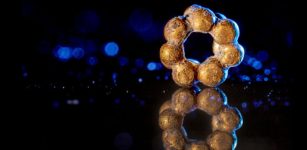 Unique 1,600-Year-Old Gold Bead Found By Teenager In Jerusalem’s City Of David
Archaeology | Feb 9, 2023
Unique 1,600-Year-Old Gold Bead Found By Teenager In Jerusalem’s City Of David
Archaeology | Feb 9, 2023 -
 Unusual 6,000-Year-Old Gold Objects Discovered In Hungarian Tombs – More Mysterious Conical Hats?
Archaeology | Mar 25, 2021
Unusual 6,000-Year-Old Gold Objects Discovered In Hungarian Tombs – More Mysterious Conical Hats?
Archaeology | Mar 25, 2021 -
 Mount’s Bay, Lyonesse, Langarroc: Legendary Submerged Lands And Buried Towns Of Cornwall
Featured Stories | Apr 21, 2022
Mount’s Bay, Lyonesse, Langarroc: Legendary Submerged Lands And Buried Towns Of Cornwall
Featured Stories | Apr 21, 2022 -
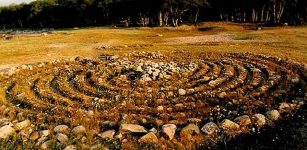 Secrets Of Bolshoi Zayatsky Island – Mysterious Stone Labyrinths Of Unknown Purpose And Origin
Featured Stories | Oct 21, 2014
Secrets Of Bolshoi Zayatsky Island – Mysterious Stone Labyrinths Of Unknown Purpose And Origin
Featured Stories | Oct 21, 2014 -
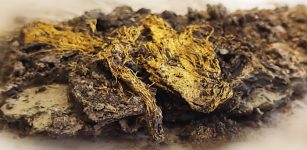 Unique Ancient Gold Cloth Found In The Necropolis Of Saint-Pierre-l’Estrier Is The Largest Antique Piece Found To Date
Archaeology | Aug 13, 2022
Unique Ancient Gold Cloth Found In The Necropolis Of Saint-Pierre-l’Estrier Is The Largest Antique Piece Found To Date
Archaeology | Aug 13, 2022 -
 Mysterious Disappearance Of Explorer Peng Jiamu In Lop Nur – The Wandering Lake
Featured Stories | Dec 20, 2018
Mysterious Disappearance Of Explorer Peng Jiamu In Lop Nur – The Wandering Lake
Featured Stories | Dec 20, 2018 -
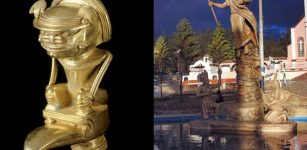 Legend Of Bochica And Mysterious Ancient Stone Structures In Colombia
Featured Stories | Jun 5, 2016
Legend Of Bochica And Mysterious Ancient Stone Structures In Colombia
Featured Stories | Jun 5, 2016 -
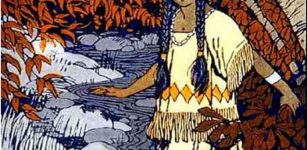 Nimerigar: Mythological Race Of Little People Living In Wyoming
Featured Stories | Jun 7, 2017
Nimerigar: Mythological Race Of Little People Living In Wyoming
Featured Stories | Jun 7, 2017 -
 Advanced Ancient Technology – Talos A Greek Robot Created By The God Of The Forge
Featured Stories | Jun 28, 2014
Advanced Ancient Technology – Talos A Greek Robot Created By The God Of The Forge
Featured Stories | Jun 28, 2014 -
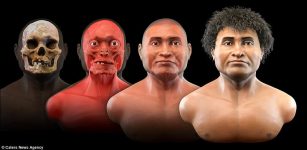 Controversial 3D Reconstruction Of 10,000-Year-Old Apiuna Man Reveals First Americans Came From Africa
Archaeology | Jun 6, 2017
Controversial 3D Reconstruction Of 10,000-Year-Old Apiuna Man Reveals First Americans Came From Africa
Archaeology | Jun 6, 2017 -
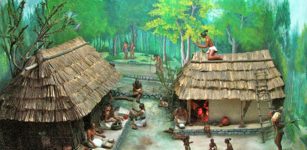 Daily Life Of Ancient Maya
Ancient History Facts | Oct 12, 2020
Daily Life Of Ancient Maya
Ancient History Facts | Oct 12, 2020 -
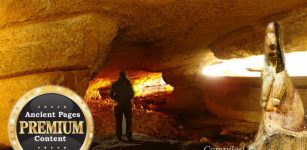 A Scientist’s Powerful Dream Revealed An Extraordinary Archaeological Discovery
Featured Stories | Jan 25, 2019
A Scientist’s Powerful Dream Revealed An Extraordinary Archaeological Discovery
Featured Stories | Jan 25, 2019 -
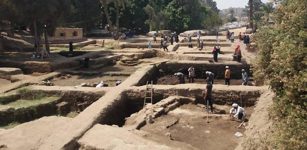 Inscribed Fragments Of Stone Slabs Unearthed In Matariya, Ancient Heliopolis
Archaeology | Nov 9, 2018
Inscribed Fragments Of Stone Slabs Unearthed In Matariya, Ancient Heliopolis
Archaeology | Nov 9, 2018 -
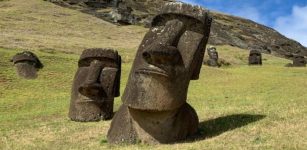 DNA Results Show: Polynesians, Native Americans Made Contact Before European Arrival
Archaeology | Jul 9, 2020
DNA Results Show: Polynesians, Native Americans Made Contact Before European Arrival
Archaeology | Jul 9, 2020 -
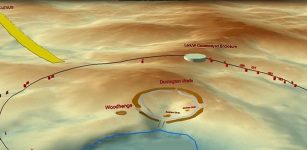 Huge Ring Of Ancient Shafts Discovered Near Stonehenge
Archaeology | Jun 22, 2020
Huge Ring Of Ancient Shafts Discovered Near Stonehenge
Archaeology | Jun 22, 2020 -
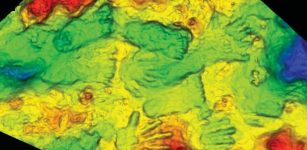 World’s Oldest Hand And Footprints Discovered On The Tibetan Plateau Are 226,000-Year-Old!
Archaeology | Sep 15, 2021
World’s Oldest Hand And Footprints Discovered On The Tibetan Plateau Are 226,000-Year-Old!
Archaeology | Sep 15, 2021 -
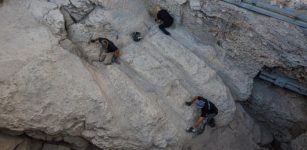 Mysterious 2,800-Year-Old Channel Installation Discovered In The City Of David, Jerusalem
Archaeology | Aug 30, 2023
Mysterious 2,800-Year-Old Channel Installation Discovered In The City Of David, Jerusalem
Archaeology | Aug 30, 2023 -
 Long Serpent: Most Famous Viking Longship Of King Olav Tryggvason Of Norway And Its Fate
Featured Stories | Jun 7, 2017
Long Serpent: Most Famous Viking Longship Of King Olav Tryggvason Of Norway And Its Fate
Featured Stories | Jun 7, 2017 -
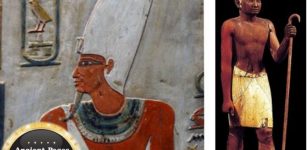 Mysterious Ancient Rulers With Elongated Skulls – Who Were They Really?
Featured Stories | May 19, 2015
Mysterious Ancient Rulers With Elongated Skulls – Who Were They Really?
Featured Stories | May 19, 2015 -
 518-Million-Year-Old-Rocks Suggest Animal And Human Life May Have First Emerged In China – Scientists Say
News | Apr 19, 2022
518-Million-Year-Old-Rocks Suggest Animal And Human Life May Have First Emerged In China – Scientists Say
News | Apr 19, 2022



